Motoring
Audi e-tron quattro: A brave new – electric – world
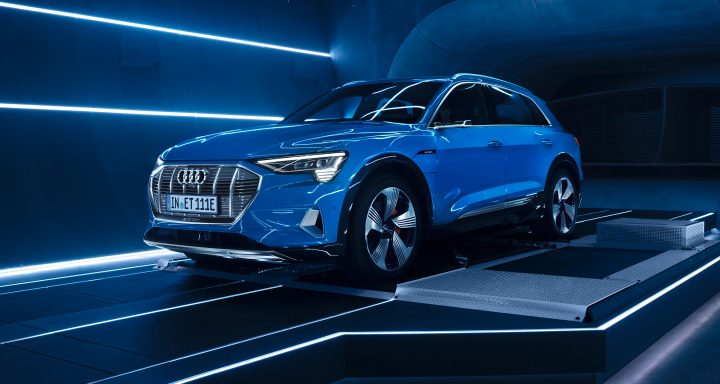
Audi pulled out all the stops when it unveiled its e-tron all-electric car to the global media in San Francisco earlier this week. That’s because the e-tron is not just a groundbreaking electric car, but the harbinger of a bold mobility strategy.
On Monday night, a swarm of 850 Intel mini-drones painted Audi’s four rings logo in vibrant hues over a dusky San Francisco Bay. The occasion? The world debut of the German automaker’s latest, and perhaps bravest, new model.
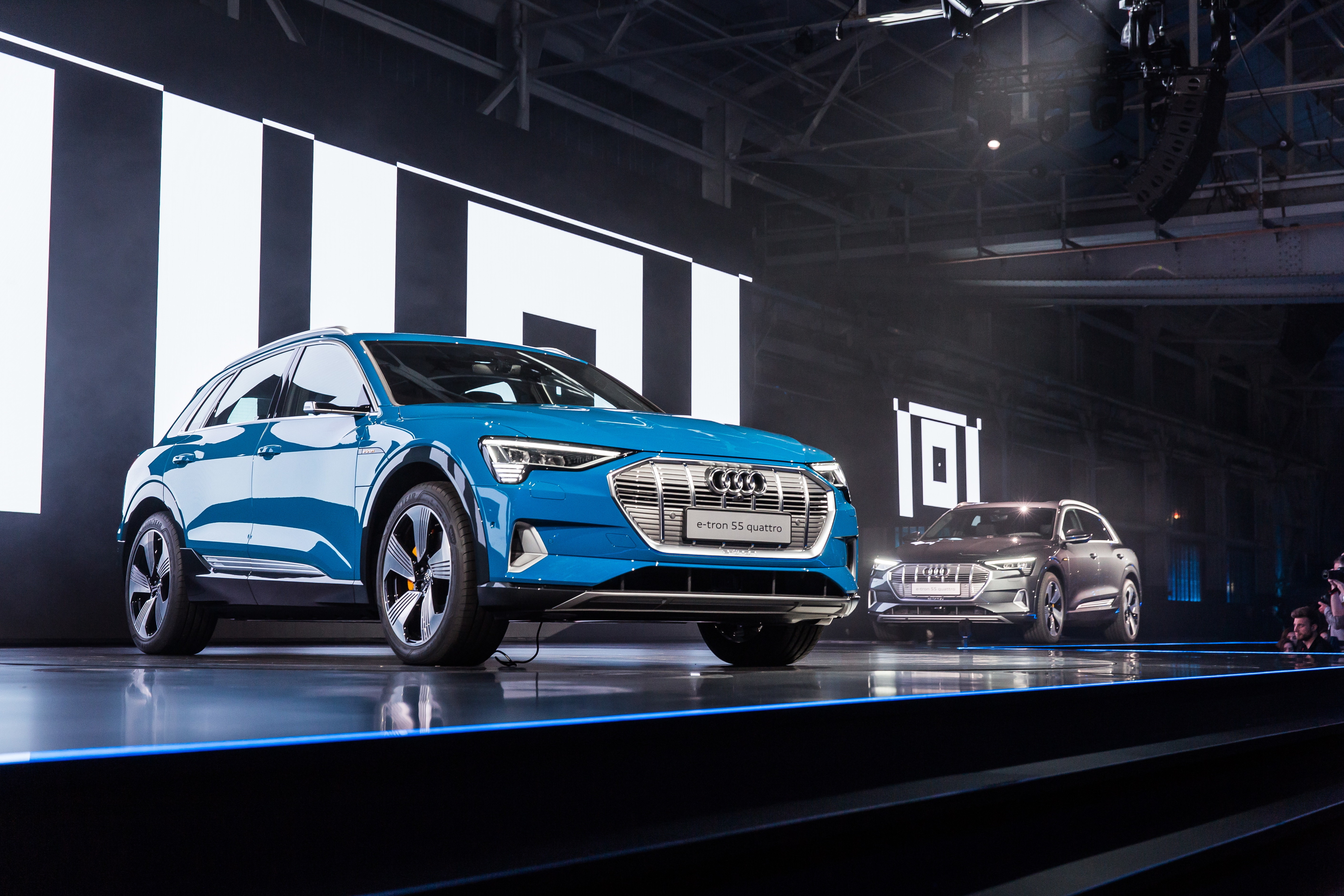
- The Charge world premiere of the Audi e-tron
It was an appropriately high-tech way to welcome the Audi e-tron quattro – the premium brand’s first all-electric model. Not that the newcomer is the world’s first all-electric car.
As caretaker CEO Bram Schot wryly remarked, that honour belongs to Robert Anderson, a Scotsman who created a rudimentary electric carriage, way back in 1832. More recently, it’s been Tesla, located only a few miles away in Fremont, California, that has been hogging the electric vehicle headlines.
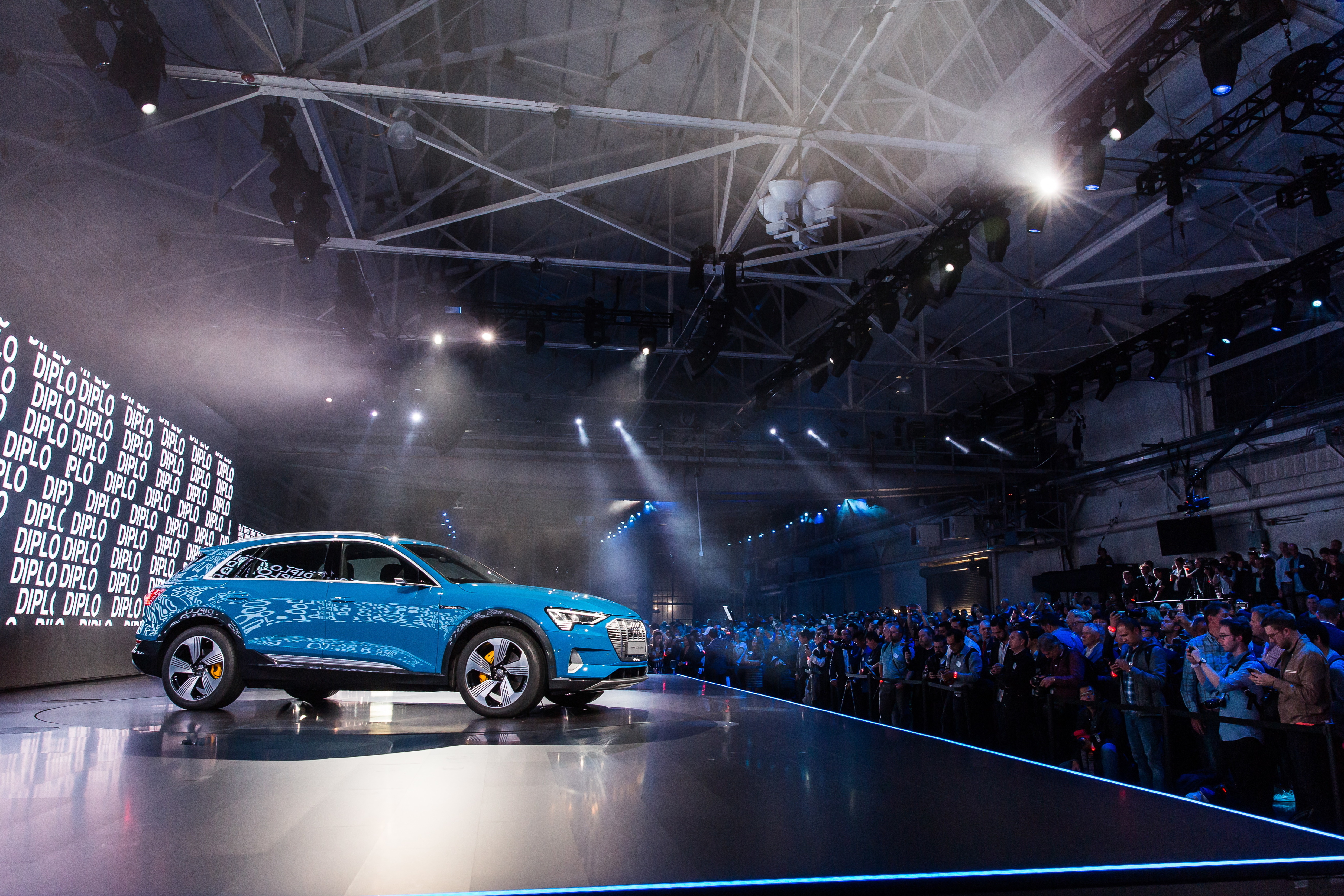
BMW’s i3 urban commuter and i8 sports car have also been around for a good few years now, while Jaguar recently launched its iPace EV. And only a few weeks ago, Mercedes-Benz revealed its upcoming EQC all-electric SUV in Stockholm.
That’s not to say that the Audi e-tron isn’t ground-breaking, though. The list of innovations includes high-capacity rapid recharging, video-camera exterior mirrors and selectable energy recuperation – innovations that sound like science fiction, but are now a production car reality.
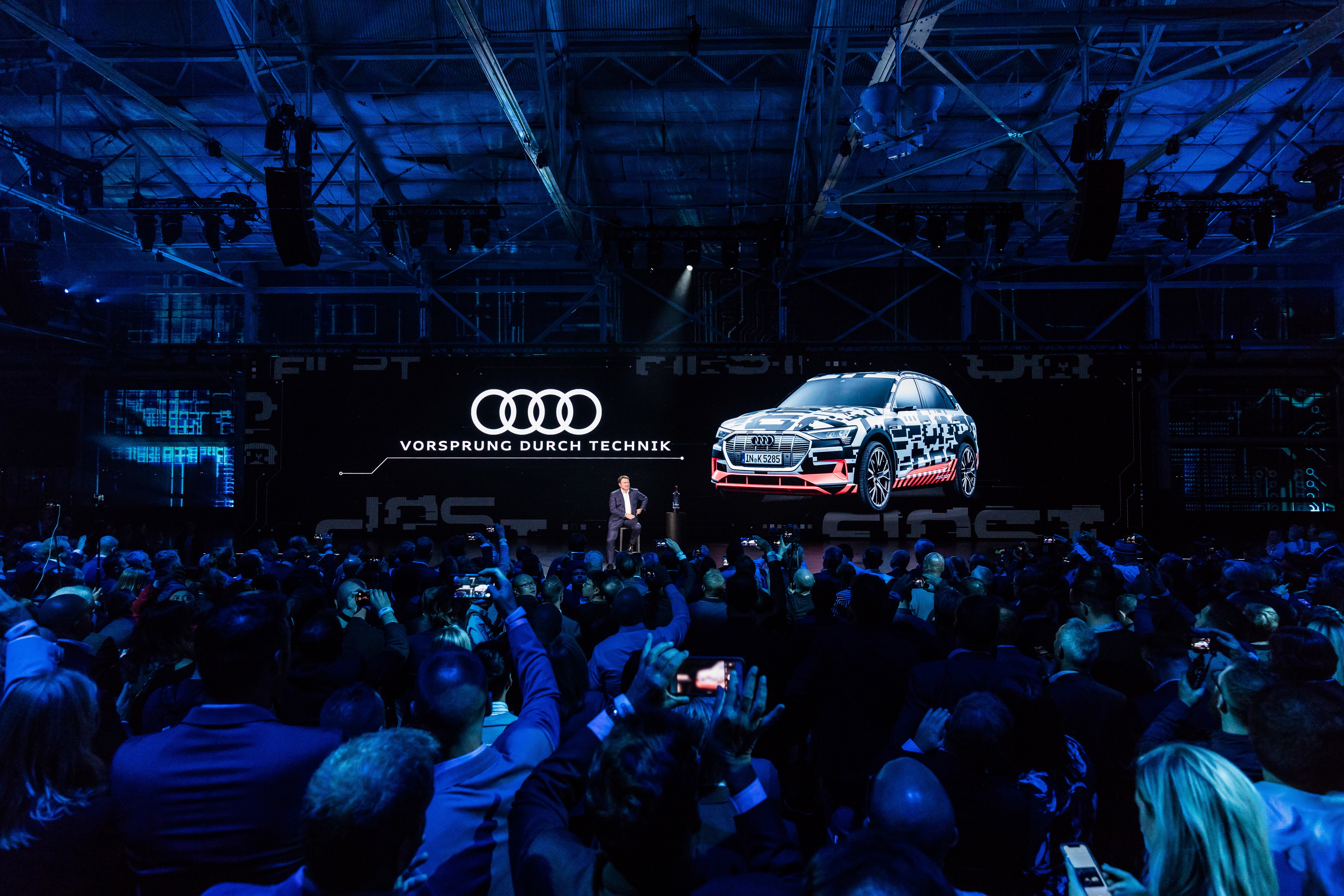
Perhaps even more importantly, the e-tron is the precursor of a raft of new models as Audi ramps up its electric car offensive. It expects to have 10 fully electric vehicles in its product portfolio by 2025, with three of those due for launch in the next two years.
Next year, the e-tron will be joined by the e-tron Sportback, while 2020 will see the launch of an all-electric compact model, and an all-out sports car, developed in conjunction with Porsche and sharing some of the upcoming Porsche Taycan EV’s technology.
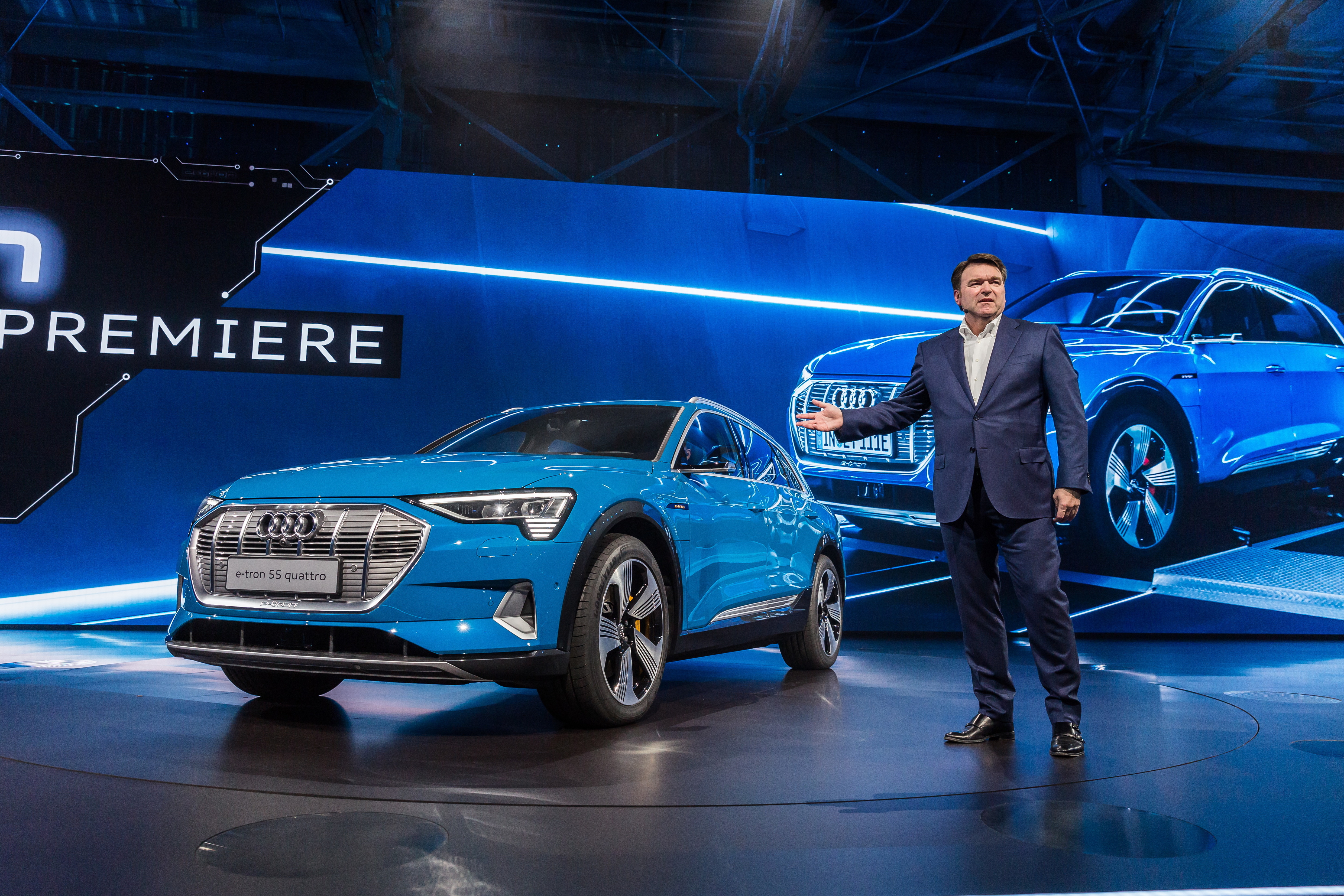
- Bram Schot, Temporary CEO of AUDI AG and Board Member for Sales and Marketing
According to Schot, the e-tron launch is also significant because it signals the early stages of a merger between Audi’s traditional premium car business and a new era of electrified, autonomous, digitally connected motoring.
Audi foresees a motoring world where access to automotive mobility won’t necessarily require ownership, and where end users will be able to choose a car for short or long-term use based on their motoring needs, or share cars with other motorists to ease traffic and reduce costs.
For now, though, the new e-tron is Audi’s first expression of what will be a brave new motoring world, and while it isn’t fully autonomous, it is very much all-electric, and digitally connected.
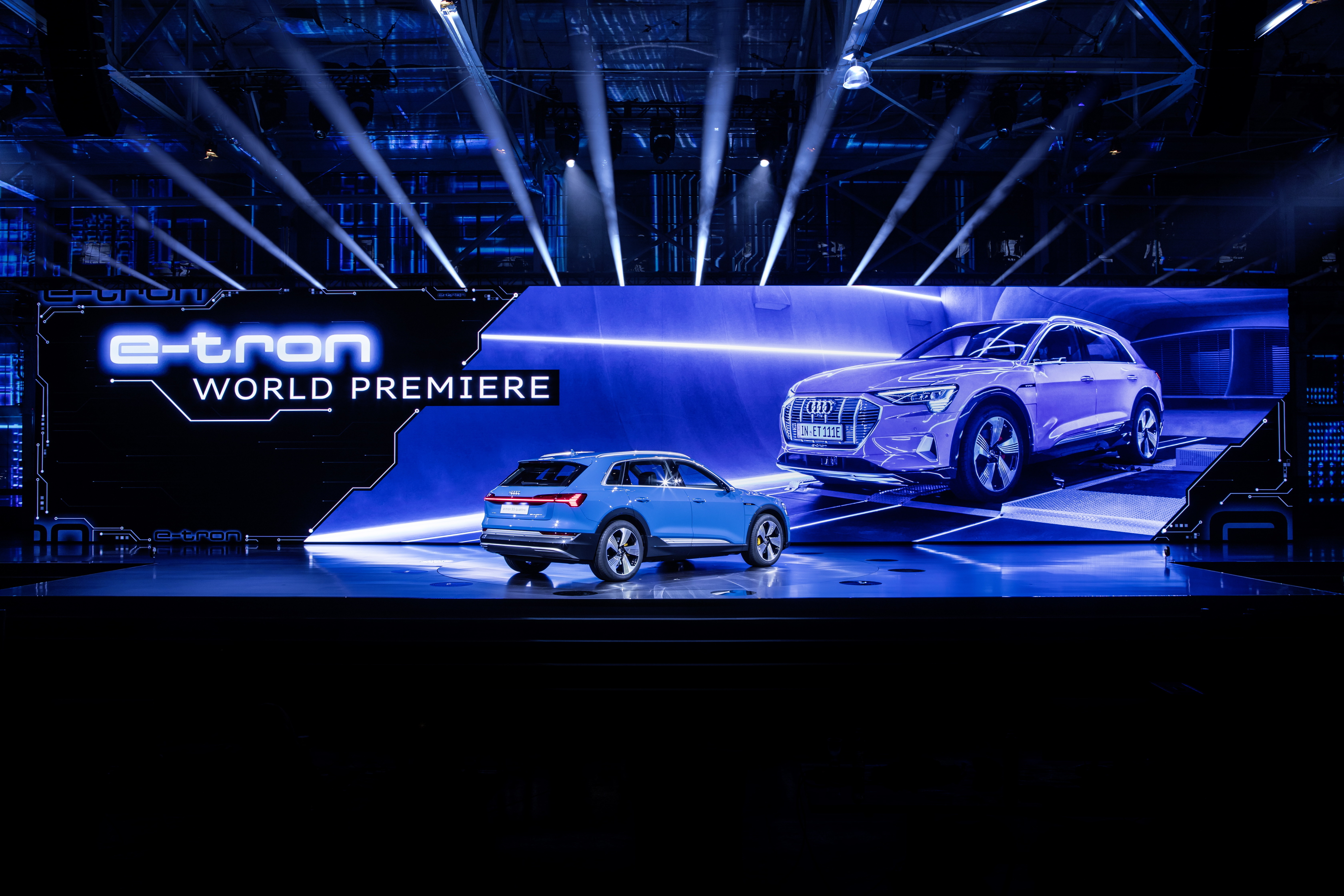
For a vehicle trumpeting sustainability as another core value, the e-tron is surprisingly large: at 4,9m long and 1,94m wide, it’s longer and wider than an Audi Q5, and not much smaller than the Q7. But it’s lower than both, adding to a streamlined, athletic look.
From a design perspective, the use of an all-electric drivetrain – and specifically the absence of a large and heavy internal combustion engine up front – has allowed a change in proportions and packaging.
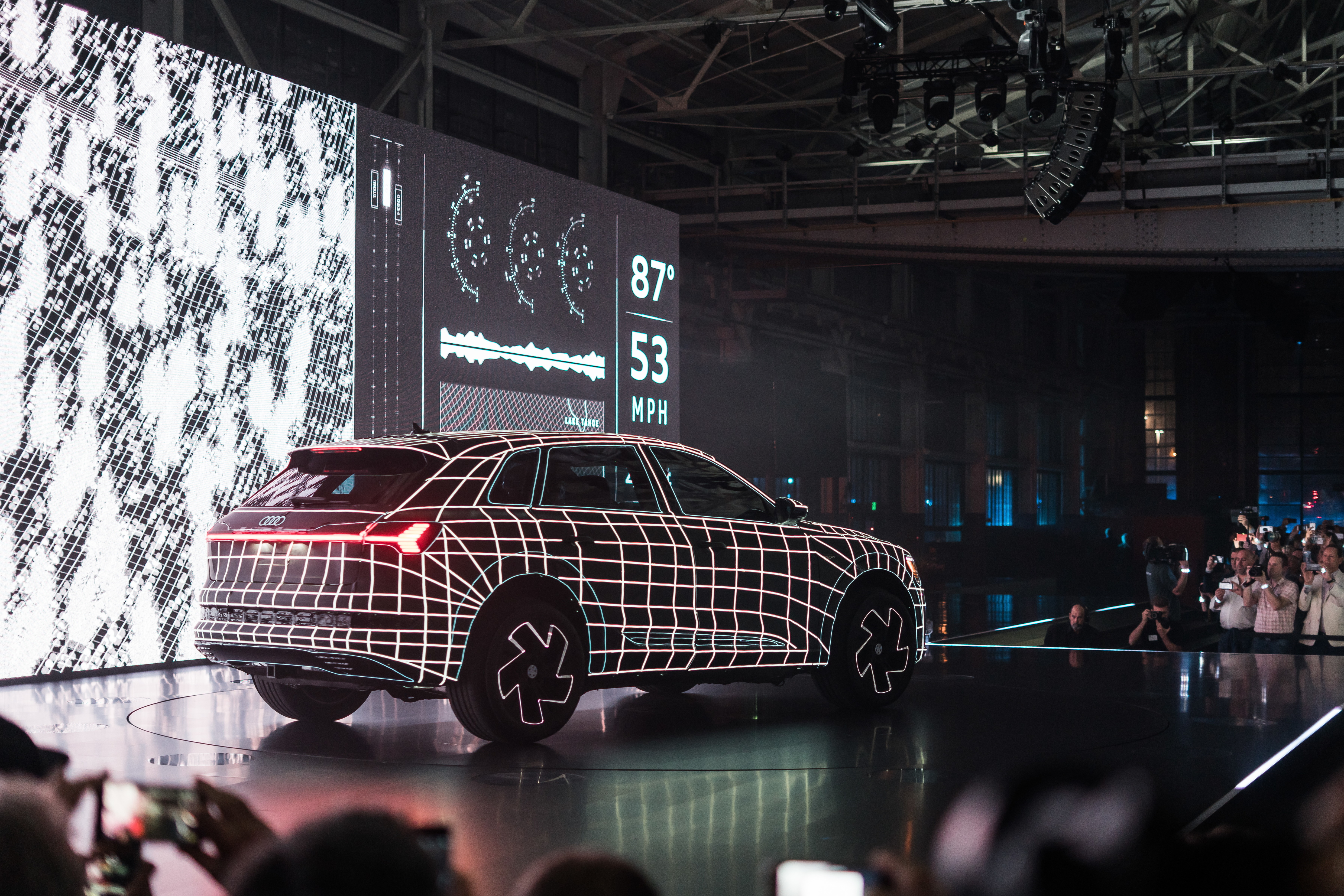
Yes, it still looks the SUV part, but the overhangs are unusually short, especially at the front, allowing an uncommonly long wheelbase of 2,93m. Add the lower roofline, a crisp shoulder line and boldly emphasised wheel arches, and the result is visually dynamic.
The wind tunnel figures prove that the e-tron doesn’t just look streamlined, either: it boasts an impressive aerodynamic coefficient of 0.28. Opt for the camera-based virtual side mirrors, and that value is trimmed down to 0.27.
Those virtual mirrors – a world first for a production car – are a good example of the e-tron pushing the automotive envelope. The slim, streamlined camera housings are located where the bulky, conventional exterior mirrors would be.
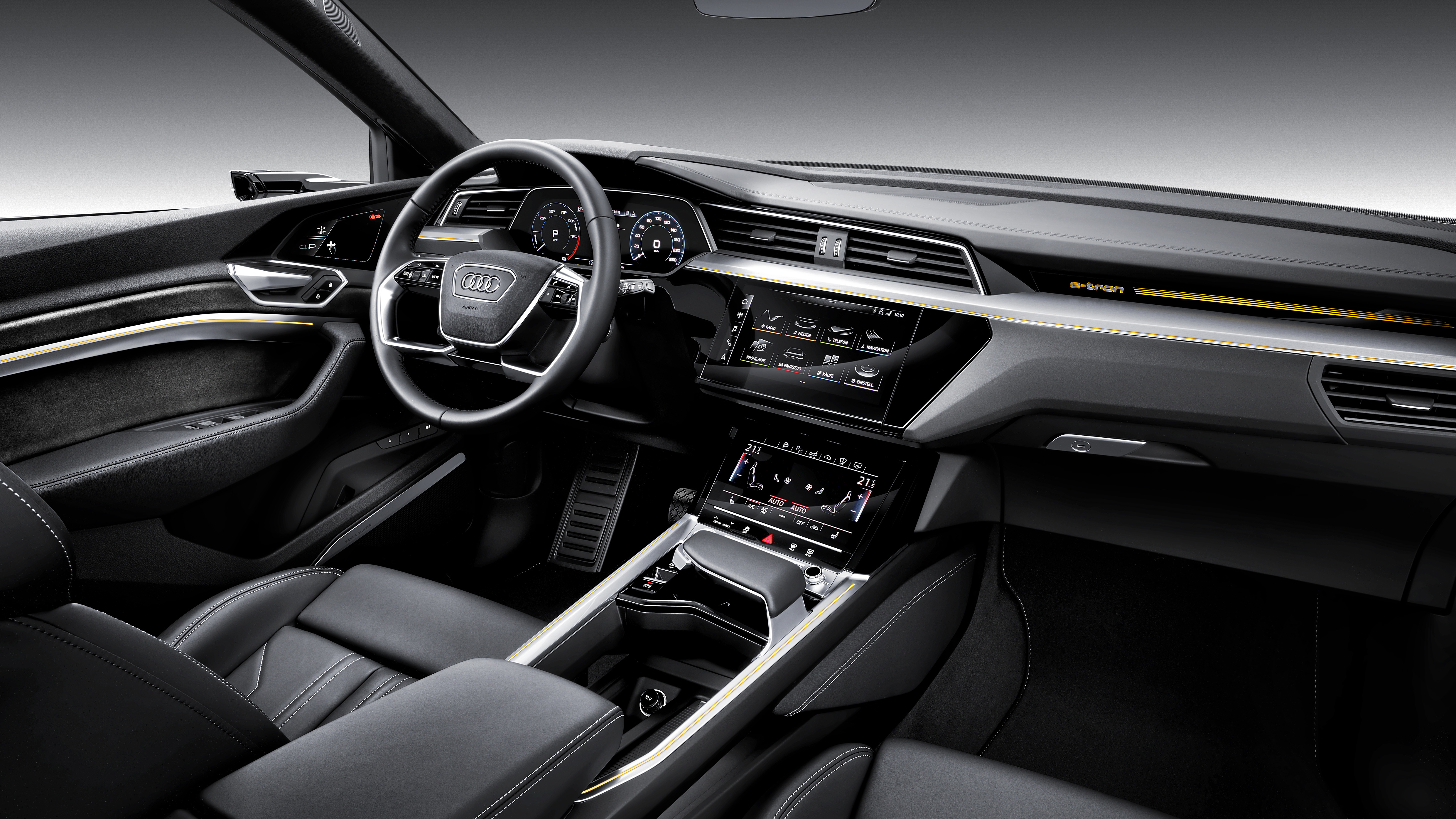
Inside, a pair of high-res OLED displays high up on the each front door panel provides a bright, sharp, full-colour rear-view image. They also include blind-spot warning lights, and tilt down when reversing.
The virtual mirrors substantially reduce slipstream turbulence, allowing a 5 percent improvement in aerodynamics, and reduced wind noise levels. The fully-clad underbody also contributes to the e-tron’s smooth passage through the air.
Given the extended wheelbase, it comes as no surprise that the e-tron is even roomier than expected – especially at the rear, where the absence of a transmission tunnel adds to an almost limo-like sense of space.
Premium materials impressed on the launch units on display, with a level of tactile quality right up there with Audi’s already high standards. It may be electric, but the e-tron is still very much upper-class luxurious, too.
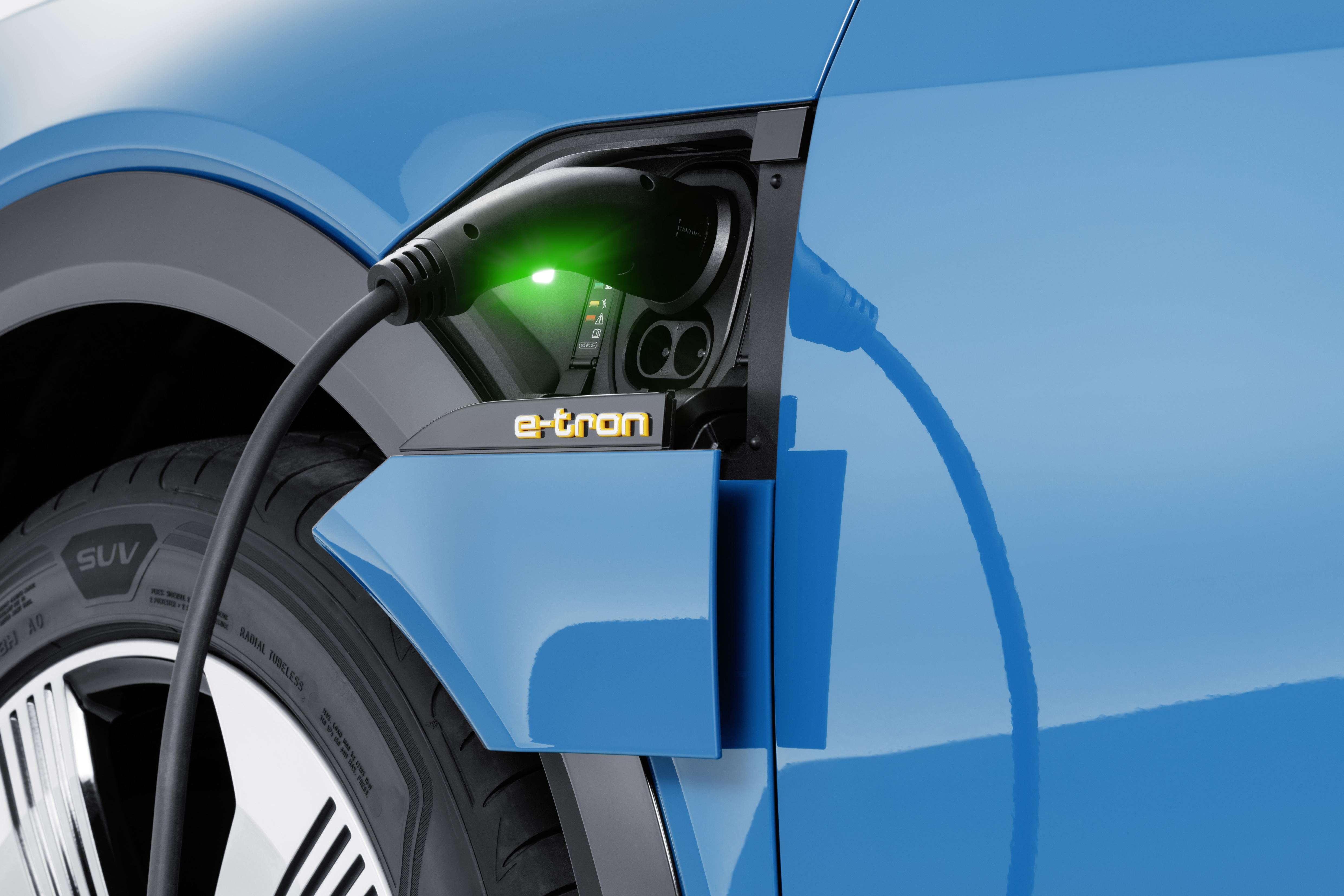
On a tech level, a highlight is the array high-res screens of Audi’s virtual cockpit, already familiar from the next-gen A7 and A8, but even better integrated here. The switchgear is slickly arranged, and includes a broad, almost sculptural shift lever in the centre console.
The latest iteration of Audi’s multimedia interface looks after the extensive infotainment features, which embraces advanced navigation, hands-free communication, vehicle systems control and more.
In the e-tron, it’s also linked to app-based control features that allow remote entry, personalisation of literally hundreds of parameters, setting of battery charging rates and timing, pre-start climate control, and more. It’s arguably the most connected car Audi has ever built.
Add a 600-litre boot (plus 60 litres of stowage under the bonnet) and the e-tron’s practical credentials are equally impeccable, despite the presence of its large, 700kg battery pack, cleverly located in the floor.
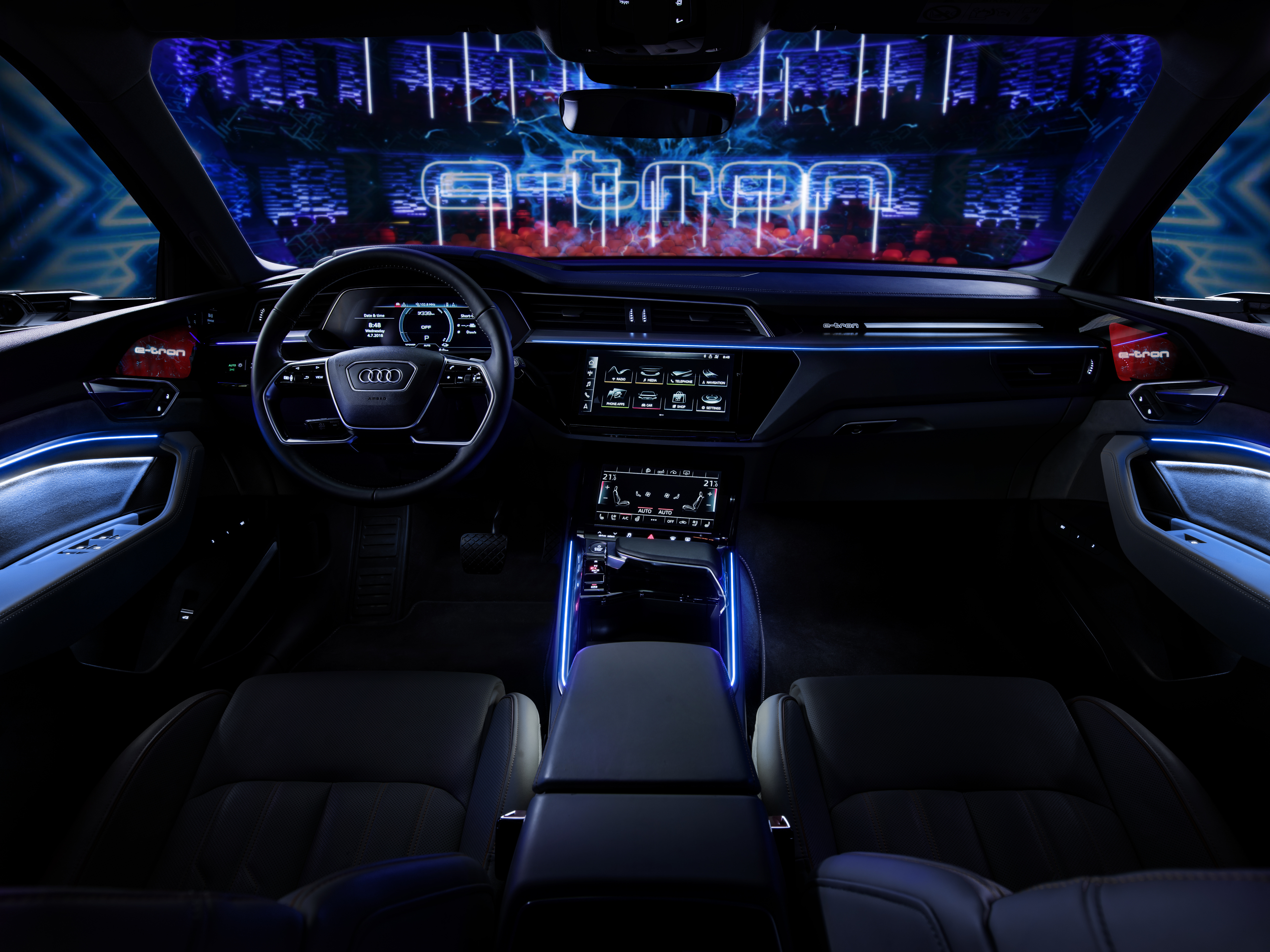
Mounting the long, flat battery pack so low allows for an uncommonly low centre gravity, which benefits handling and stability. Standard air suspension promises a cushy ride, and allows up to 76mm of ride height adjustment on the fly.
Another external feature with very real functional benefits is the single-frame grille, which has active slats that are opened and closed, depending on the electric drivetrain’s cooling requirements.
There’s no conventional radiator, of course, but the air is channelled to the battery pack, which is fluid-cooled and carefully temperature-regulated to ensure optimum efficiency. The battery’s charge capacity is a class-leading 95kWh, which translates into a real-world range of about 400km, Audi promises.
Efficiency is very much a core theme of the e-tron, as it has a direct bearing on probably the most important EV parameter of all: operating range. High efficiency allows optimum use of the available battery charge, which increases the distance achieved per charge.
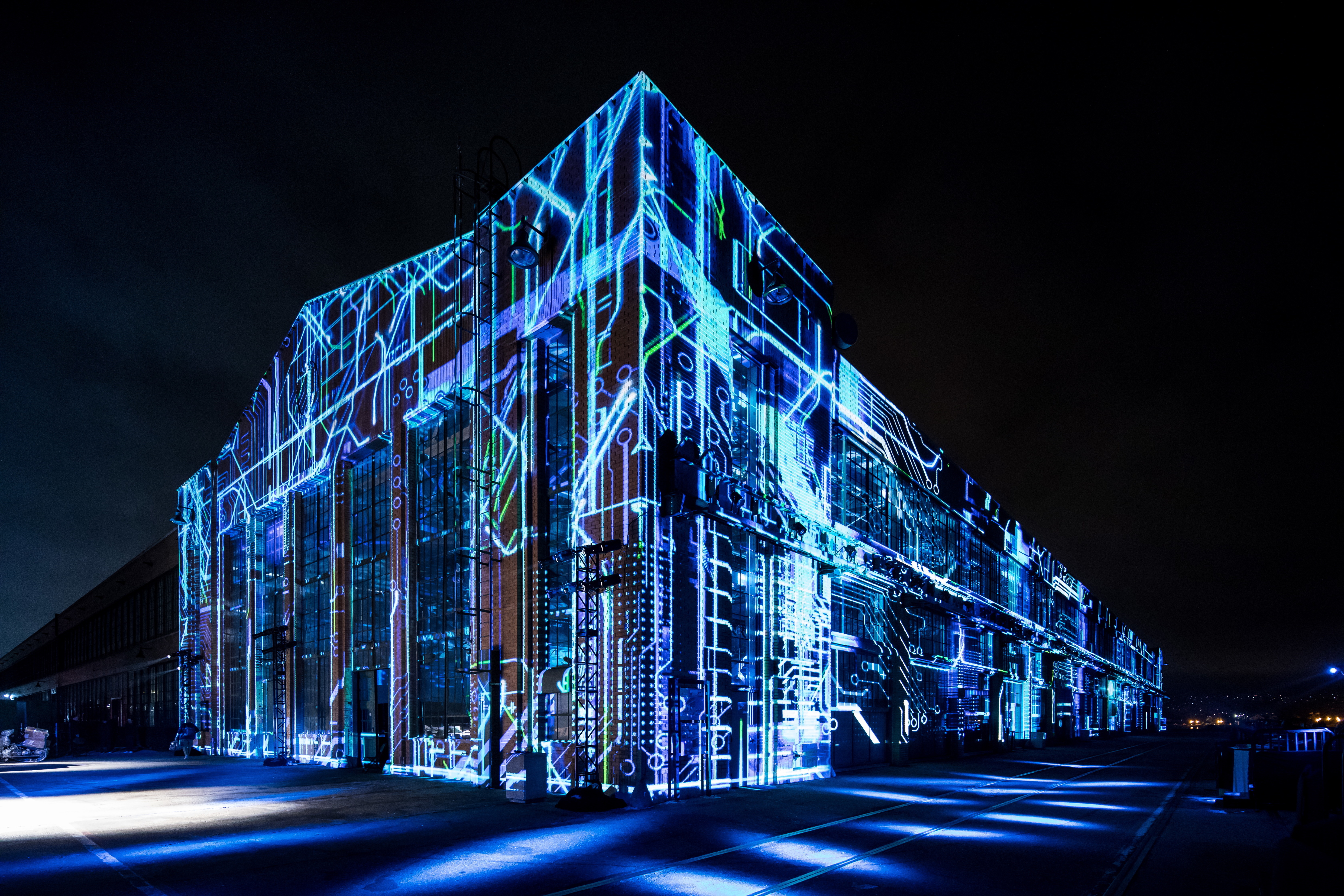
The e-tron employs two asynchronous electric motors – one for each axle – which are intelligently controlled to optimise both traction and energy use. The same motors act as generators, allowing energy to be recuperated under braking, or when coasting downhill.
Total system output is 300kW and 664Nm, allowing undeniably sporty dynamics. Audi isn’t saying what the e-tron weighs, but it gets from 0-100km/h in under 6sec, and top speed is limited to 200km/h – impressive for a big, all-electric SUV.
Drive is primarily from the rear wheels, with the fronts coming into play when needed, but both motors are part of the e-tron’s sophisticated energy recuperation system.
Energy recuperation is a vital contributing factor to the e-tron’s range and efficiency. Recuperation is adjustable via control paddles behind the steering wheel, and there’s a software controlled management system that combines the recuperation and braking systems.

- Marc Lichte, Head of Audi Design
The system allows recuperation to be used instead of friction braking whenever possible, and yet ensures that brake response and braking force remains uncompromised. Transition between throttle release and braking is said to be seamless – which would be a major achievement.
As for charging, the e-tron offers three options. The standard 11kW charger plugs into any home AC power socket and charges the battery from empty in around 8.5 hours. There’s an optional 22kW home charger, which cuts charging time to four to five hours.
However, the e-tron battery can accept charge rates of up to 150kW, delivered by fast charge points due to be installed in charge networks in Europe and the US in the next 24 months. Those charge points can replenish the battery up to 80 percent in just 30min, and are destined for charge stations along major long-distance routes.
While a network of charge stations is being deployed in South Africa, there’s no indication whether the charge points will include this high-capacity capability – especially since the e-tron is currently the only EV to support such a high charge rate.
Rapid charging offered on our national routes between major centres would go a long way towards addressing the nagging concern about the long-distance viability of EVs in countries like SA.
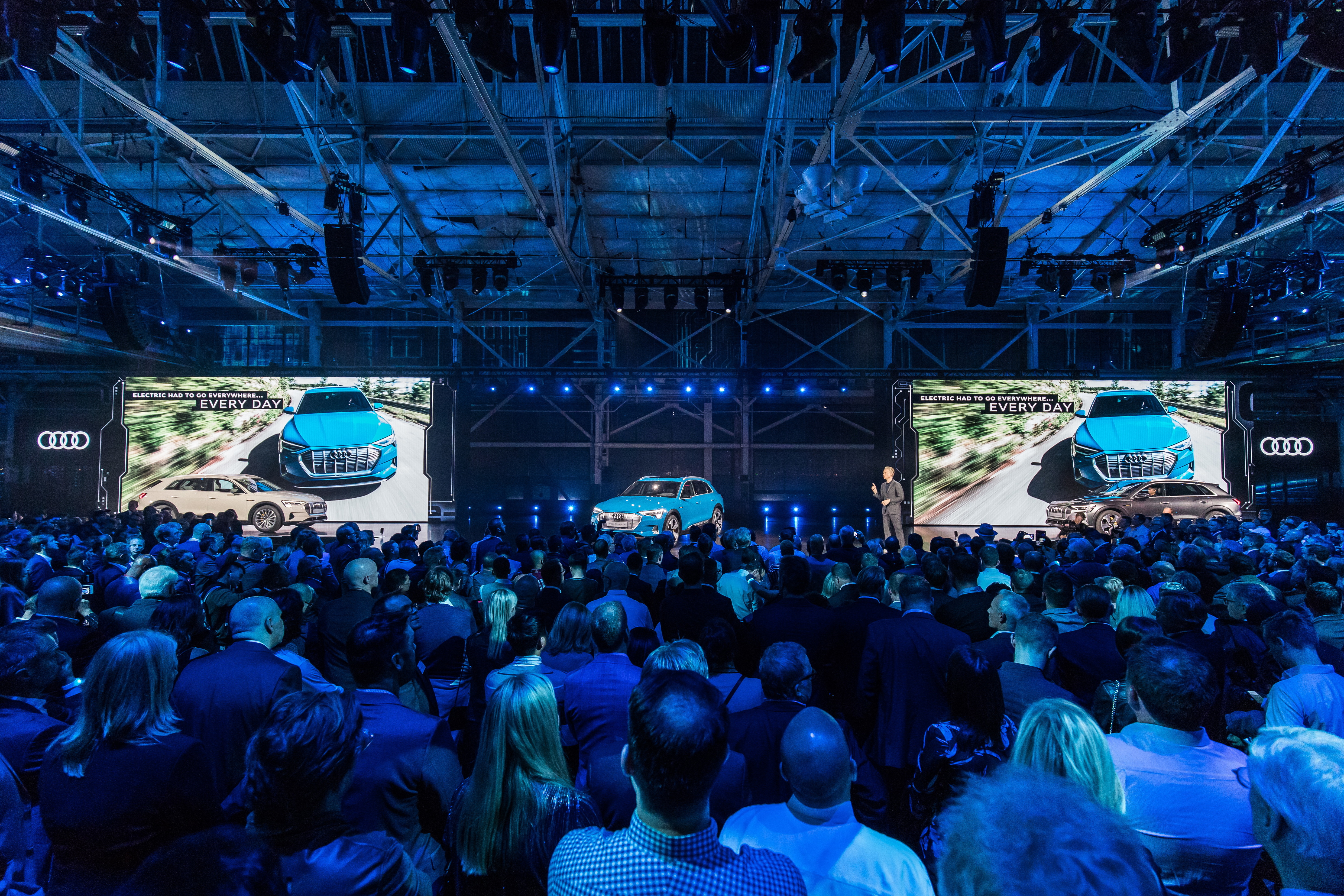
- Scott Keogh, President Audi of America
Even so, with a range of 400km on offer, the e-tron is a very viable motoring proposition in the SA motoring context, with the exception of those long holiday trips. It’s also spacious and luxurious, with tech that’s both sexy and user-friendly.
Pricing may be a limiting factor, though. The e-tron retails for approximately 80,000 euros in Germany, and 75,000 dollars in North America. Depending on exchange rate and duties, that could translate into a local retail price of R1.3-million or more.
That electric cars attract extra duties won’t help pricing, either. However, it will be important for Audi to establish the e-tron as more than a niche model, and to underline its mainstream status from the outset, so it will need to be priced competitively against Jaguar iPace and Mercedes-Benz EQC, both of which are smaller.
If all goes well, the Audi e-tron quattro will go on sale in SA by this time next year. Hopefully I’ll get to drive it before then – but for now the e-tron suggests that Audi’s EV future is bright indeed. And this is only the beginning. DM
VITAL STATS
| Audi e-tron quattro | |
| Engine | Dual asynchronous electric motors |
| Total system power | 300kW |
| Total torque | 664Nm (instant) |
| Gearbox | Single-speed, quattro AWD |
| Wheels/tyres | 19-inch alloy, 255/55 R19 tyres |
| 0-100 km/h | 5.7sec |
| Top speed | 200km/h (limited) |
| Battery capacity | 95 kWh |
| Operating range (claimed) | 400km |
| Retail price / as tested | TBA |
















 Become an Insider
Become an Insider